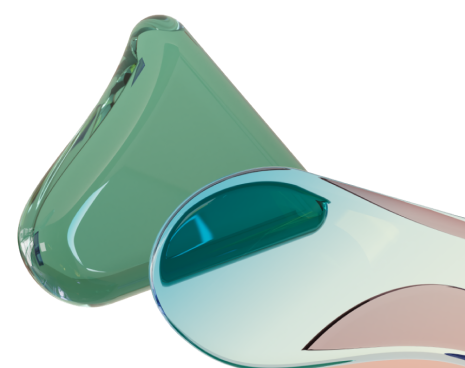How important are net zero goals to Aurecon’s strategy?
Adam Peacock: It’s huge, it's in our blueprint to achieve net zero in 2025. We’ve looked at the carbon footprint of the business and worked out what we need to do. There is a huge opportunity to reduce carbon and operational energy through the sustainability and design campaign we’ve rolled out to the business. We have a training programme to make sure all staff are educated. We want all client facing staff to be talking to clients about net zero, all of our designers and technical teams need to know how to calculate it and understand how to reduce carbon on their projects and make them more sustainable.
At what pace is the industry is adapting on the journey to net zero?
Adam Peacock: I think it varies. If we look at it holistically, countries like New Zealand, Australia and the UK are a bit more ahead of the curve but even in those mature markets, it's still lagging behind where it needs to be.
What challenges are most common when navigating the journey to net zero?
Adam Peacock: Not that much is mandated at the moment. So as engineers and consultants, that's a challenge that we need to overcome. A more widespread top-down approach would be very helpful. There may be lots of government mandated regulations in some countries, like Singapore, for example, but in countries like Thailand, Vietnam, there's very little. So, when you talk to a client about sustainability it's more like a buzzword, and they're saying, where's the return on investment for this?
If there’s no regulatory mandates from the government to actually incentivise being more sustainable – such as tax incentives - and there's no return on investment for the client, it's much harder to convince them. That is definitely a pain point for us at the moment.
Global standard frameworks promote consistency. We need the Paris Agreement and other global standards to drive and mandate what we should be trying to achieve.
Why is digital transformation such a key part of the net zero journey?
Jacob Hoare: One of the services Aurecon offers to clients is digital readiness and information strategy. We assess their current processes, people and technology to understand their present state and where they aspire to be in the next one, two, five years regarding their digital transformation journey. Often, the information at hand is not standardised. Having standardised, high quality data is crucial as it enables organizations to make informed decisions about their assets and progressing towards the net zero.”
“Having good quality data sets up organisations for success, it supports integrated digital foundations. Many clients either lack comprehensive knowledge of their assets or have information that is fragmented or disorganised. However digital twins enable us to consolidate information in a centralised location to allow better detail analysis and generate valuable business insights. Digital twins can also be tailored specifically to align to an organisation's objectives, such as achieving net zero.”
How well are companies using data across the asset life cycle?
Jacob Hoare: “Companies increasingly recognise the value of data and are becoming more adept at understanding how to leverage the data generated throughout a life cycle, spanning design, construction, operations etc to help with a clear vision on goals. If they want to build a strategic roadmap to achieve those goals then they can use this valuable information and sometimes this is where consultants like us come in to provide support and guidance on that journey.”
“Often organisations know what they want to achieve, the challenge is the actual execution of getting there.”
Why are strong digital foundations an important part of the net zero approach?
Adam Peacock: Digital plays a huge role in everything we do. It's very important to have digital tools supporting and aligning with the sustainability aspects of what we're trying to achieve.
The challenge that we have is that a lot of the sustainable decisions need to be made very early on in a project but a lot of the available digital tools play their part later on, once you've built a model, and by that stage, it's harder to make wholesale changes.
What we're trying to do is build tools that we can use very quickly and easily, at concept or master planning design stages to give us information that, even if it's not 100% accurate, is enough to do option comparisons early on in design. Then we can allow the clients to make more informed decisions, and we can influence that as well.
At the moment what we've seen generally is models that are set up during design, and then it gets handed over to the end user, and they'll have different operational models that they'll create. Very few clients actually use digital twins, it's not that well integrated.
Ideally, we would have design models used as digital twins throughout the whole life cycle of a building. To measure efficiency, be used for repairs and maintenance management, and then at the end of life to have all that information that can be used to influence future buildings.
How well is your supply chain placed to contribute to Aurecon’s net zero strategy and vision?
Adam Peacock: it varies, in countries like New Zealand and Australia, a lot of suppliers are very savvy and mature in terms of their BIM standards and the technology they use. That can be easily integrated with what consultants like us are using.
One international client we’re working with has very mature standards for the American market, and that applies to the whole supply chain. However now they’re building in Malaysia and Thailand, and finding that there just isn’t the consistency throughout the whole supply chain in these countries. The consultants might be quite advanced but when it comes to the contractors, vendors or suppliers, they may not be able to achieve the same BIM standards. So that does prevent true integration. We need to work out how to close that gap through training or upskilling for those vendors to get them up to speed.
How can collaboration be improved upon when embracing the journey to net zero?
Adam Peacock: Internally widespread education through presentations, training workshops and sharing of case studies can be really effective. Within Aurecon we have a sustainability leadership group for the business which provides a forum for people to share learnings and help disseminate that information around the group. Globally events and networking help disseminate information and ensure that there's alignment throughout countries.
We've got to be pragmatic as consultants, we've all got to be pulling in the same direction to effect real change. If we don't have the support from the governments and the mandates, then it's very difficult to convince the client. If we don't have the support further down from the supply chains then it doesn't matter what we designed, it could get changed later on. So, it's very important that that it's a unified approach, that everyone's on board and it's a win-win for all involved. A lot of thought still needs to go into this in order to achieve our net zero ambitions as an industry.
Learn more about the journey to net zero
Download BSI's Journey to net zero report
Other featured material
Stay up to date with BSI's latest offerings across the sector
BIM Kitemark Certification PAS 2080 Bigger book of BIM Net zero pathway





